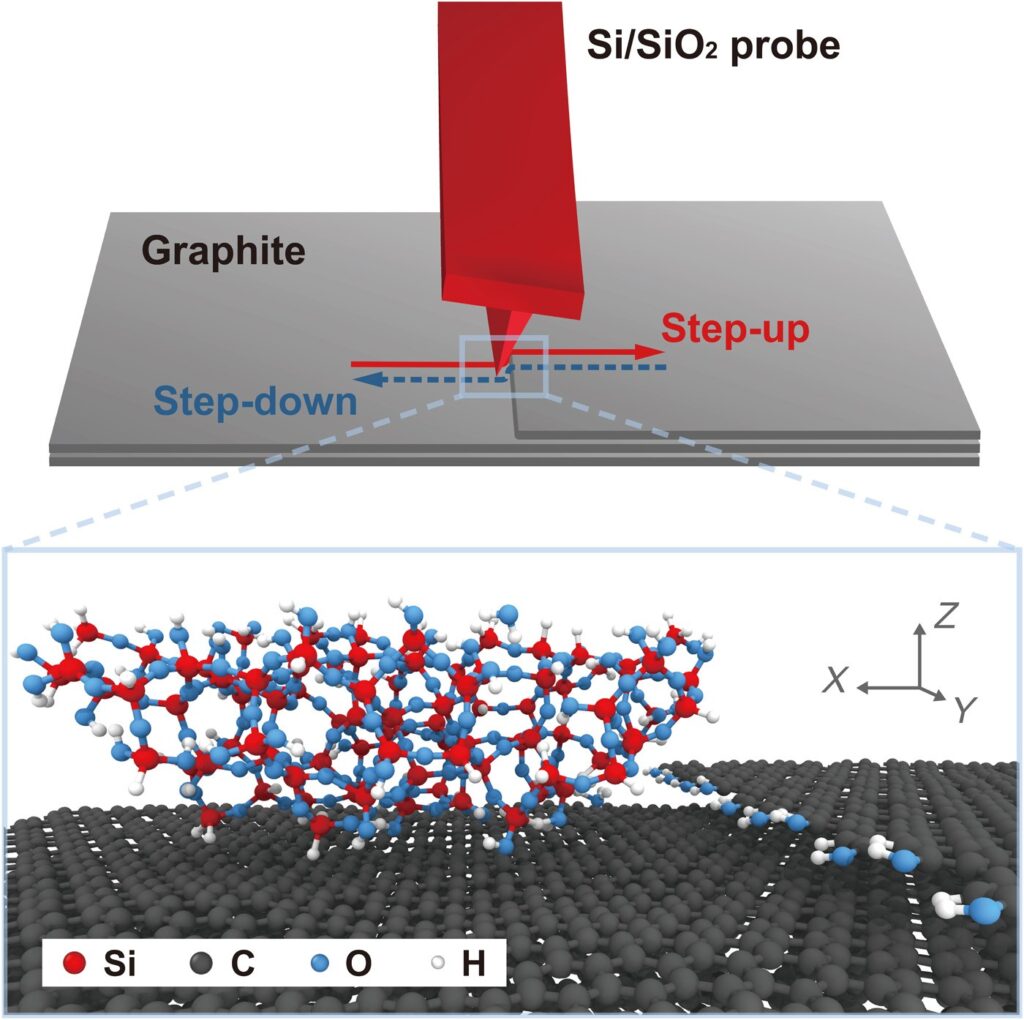Administration of the project
Origins of Friction
A one million dollar question for a tribologist is as follows: where does the friction come from? Despite the undeniable progress in tribology in recent years, this question remains there. But there is a light at the end of the tunnel.
A research team of individuals from the fields of chemical engineering, mechanical engineering, and materials research, led by Zhe Chen, gathered to study the origins of friction. Specifically, they studied the interface between graphite and silica by using a graphene single-layer step edge setup.
Frictional force is the force generated between two surfaces that contact and slide against one another. It occurs when surfaces attempt to move in the same direction or in opposite directions. The strength of the frictional force depends on many factors, including the mechanical properties, environment, interfacial layers, etc. As the force of friction leads to wasted energy, wear and tear, and degradation of materials, it affects the efficiency and expected life span of all moving systems. Consequently, it is a field of study of great interest to many industries.
According to the article “Chemical and Physical Origins of Friction on Surfaces with Atomic”, international research team identified both physical and chemical processes that contributed to the force of friction. The results provide new information regarding both the chemical and topographical origins of frictional forces.
For this research, atomic force microscopy was utilized. Atomic force microscopy (AFM) is a powerful imaging tool that is able to quantify surface morphology, or its form and structure. For the purpose of this research, the probe was made of silicon, and the graphite surface contained a single-layer graphene step edge.
Observations during the step-down process indicated friction responses where the friction oscillated as the topographic height changed. However, the oscillations and changes in topography were not entirely correlated. To determine the physical and chemical effects in the system, friction was analyzed as a function load. Additional observations were made regarding the frictional load dependence on the graphite surface and at the graphene step edge. These observations were completed using both simulations and experimental studies. From there the researchers quantified the coefficient of friction in the system. The coefficient of friction (COF) is the ratio between the force required to move a surface horizontally across another surface and the pressure generated between the two surfaces. Determining the COF in the system allowed the researchers to separate the coefficient of friction (COF) into the physical and chemical contributions.

The step-up setup in the model motion created a large frictional force due to a combination of contributions from physical and chemical effects. The physical effects were due to the topography (physical shape and features), while the chemical effects occurred as a result of interfacial bonding (bonding where the surfaces of two touching bodies are held together by intermolecular forces such as covalent, ionic, van der Waals, and hydrogen bonds). During the step-down portion of the simulations, the negative change in the topography created a force that assisted the sliding motion. At the same time, the force created by the chemical bonds between the topography of the two surfaces was highly resistant.
The researchers concluded that a balance between the physical forces created by the topography and the chemical forces created by the bonds of the two surfaces could actually determine whether the coefficient of friction was positive or negative. Chen and the other researchers are hopeful that these new insights will allow for future improvements in terms of minimizing resistance between surfaces. Ultimately, this could lead to an increase in the effectiveness and efficiency of moving systems throughout all industries, which is a very actual problem.
Further details: Zhe Chen et al. Chemical and physical origins of friction on surfaces with atomic steps, Science Advances (2019). DOI: 10.1126/sciadv.aaw0513.
References
- Zhe Chen et al. Chemical and physical origins of friction on surfaces with atomic steps, Science Advances (2019). DOI: 10.1126/sciadv.aaw0513.


Be the first to comment